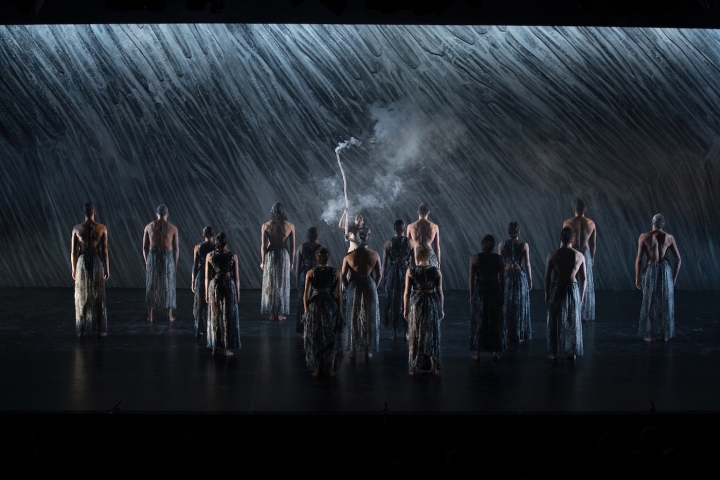
In what is sure to be one of the top performance events to take place on the city’s stages this year, Bangarra Dance Company have just completed their Perth run of OUR land people stories. It was a triumphant, sell-out production that garnered standing ovations, rapturous applause, and rave reviews from audiences and critics alike. I shall now add my voice to the many who have commended Bangarra’s beautiful, inspired work.
OUR land people stories is told in three parts: Macq, choreographed by Jasmin Sheppard, Miyagan by Beau Dean Riley Smith and Daniel Riley, and Nyapanayapa by Bangarra’s Artistic Director Stephen Page. Each piece takes us on a distinct journey through movement and sound, each raises a distinct range of emotions, and all three are beautifully staged and executed by this company.
Macq by Jasmin Sheppard is perhaps the most charged piece of the three. It brings with it a terrible 200-year legacy that was in a large sense lost to history, but which Sheppard has brought back into the light through her dance work. The piece details the breakdown of the relations between English colonists and D’harawal community under the governance of Macquarie in New South Wales, which culminated in the Appin massacre of 1816.
Her interpretation of the events is haunting and sad; a woman wails over the dead body of a loved one, men appear to be hanged, gently swinging back and forth. And then there is the quickly deteriorating mental state of Macquarie himself (Daniel Riley), with a voice reading his diary entries, describing the increasingly stringent and ultimately deadly measures he takes to control the Aboriginal population of the area. This must be as difficult a piece to perform as it is to watch, but its content is of extremely urgent importance, as is disturbingly demonstrated in the Northern Territory this week. We cannot turn a blind eye to history and pretend that the terrible decisions made by men in positions of power generations ago (and to this very day) don’t continue to cause pain. They do. And Sheppard’s piece proves that this pain can be transformed.
Miyagan by Beau Dean Riley Smith and Daniel Riley, cousins and Indigenous men from the Wiradjuri nation, takes us to a different emotional space. It’s an exploration of kinship and family, and what connects Indigenous people to this land. It’s an aesthetically-driven piece that’s striking and surreal, with metaphors that aren’t easily unlocked on a conscious level.
Criss-crossed, wavy branches with feathers at the ends descend into the dance space, signifying both roots and wings; it seems to speak to the idea of the choreographers’ exploration of their family line giving them wings to soar. The dancers are divided into ‘clans’ denoted by the colour palette of their costumes. They intermingle and pair with bird-like creatures – dancers who have donned an emu feather headpiece that obscures their faces. It’s a wondrous dance, which sees the whole company weaving in and out of the space together, and it leaves an impression of mystery and spirit.
Nyapanyapa is an odyssey of short stories inspired by the life and work of Yolngu artist Nyapanyapa Yunupingu, brought together by Stephen Page, with Elma Kris as the presence that links it all together. Nyapanyuapa’s Buffalo Story painting Incident at Mutpi (1975) serves as the source for the first movement, which describes when she was gored by a buffalo. Each following movement of the piece is characterised by Kris’s relation to her environment and the animals and people around her. The company dances behind over-sized cut-outs in ‘Lost Wendys’; in another movement they dance around Kris, overwhelming her with their exuberance and strange, synchronised movements; a massive backdrop resembling ashen bark is revealed and the dancers move through carrying smoking sticks, symbolizing death, renewal, cleansing.
So much of what makes OUR land people stories such a significant, important trio of works is its ability to wordlessly transfer a great ideas and profound emotions to its spectators. The music that drives these three pieces (by David Page, Paul Mac and Steve Francis respectively) is powerful, infectious and transports us into Bangarra’s unique world of storytelling; the set, costumes and lights make this journey complete.
CICELY BINFORD
OUR land people stories continues its tour around Australia through September. For more information, visit Bangarra’s website here.
